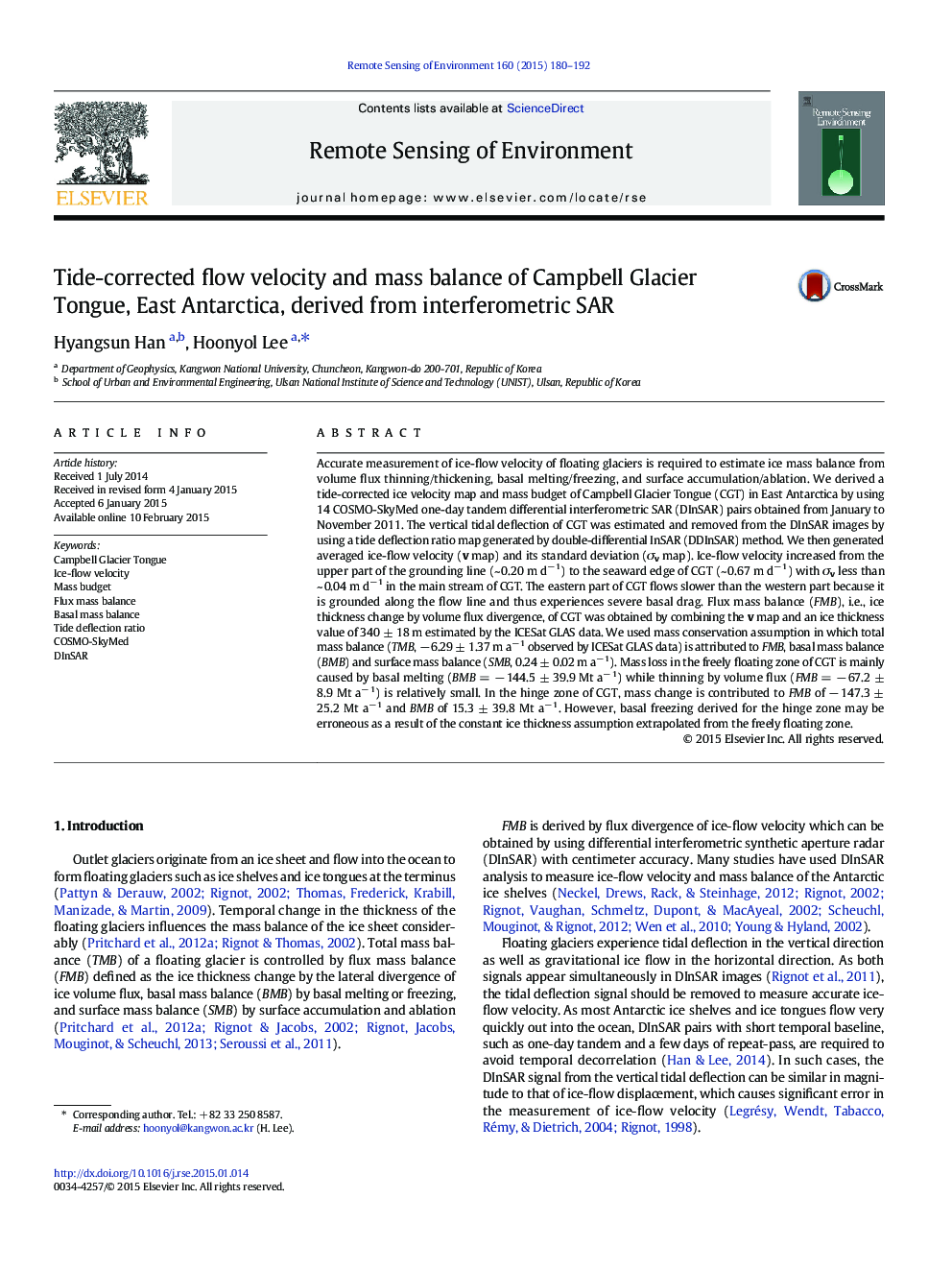| کد مقاله | کد نشریه | سال انتشار | مقاله انگلیسی | نسخه تمام متن |
|---|---|---|---|---|
| 6345979 | 1621240 | 2015 | 13 صفحه PDF | دانلود رایگان |
عنوان انگلیسی مقاله ISI
Tide-corrected flow velocity and mass balance of Campbell Glacier Tongue, East Antarctica, derived from interferometric SAR
دانلود مقاله + سفارش ترجمه
دانلود مقاله ISI انگلیسی
رایگان برای ایرانیان
کلمات کلیدی
موضوعات مرتبط
مهندسی و علوم پایه
علوم زمین و سیارات
کامپیوتر در علوم زمین
پیش نمایش صفحه اول مقاله

چکیده انگلیسی
Accurate measurement of ice-flow velocity of floating glaciers is required to estimate ice mass balance from volume flux thinning/thickening, basal melting/freezing, and surface accumulation/ablation. We derived a tide-corrected ice velocity map and mass budget of Campbell Glacier Tongue (CGT) in East Antarctica by using 14 COSMO-SkyMed one-day tandem differential interferometric SAR (DInSAR) pairs obtained from January to November 2011. The vertical tidal deflection of CGT was estimated and removed from the DInSAR images by using a tide deflection ratio map generated by double-differential InSAR (DDInSAR) method. We then generated averaged ice-flow velocity (v map) and its standard deviation (Ïv map). Ice-flow velocity increased from the upper part of the grounding line (~ 0.20 m dâ 1) to the seaward edge of CGT (~ 0.67 m dâ 1) with Ïv less than ~ 0.04 m dâ 1 in the main stream of CGT. The eastern part of CGT flows slower than the western part because it is grounded along the flow line and thus experiences severe basal drag. Flux mass balance (FMB), i.e., ice thickness change by volume flux divergence, of CGT was obtained by combining the v map and an ice thickness value of 340 ± 18 m estimated by the ICESat GLAS data. We used mass conservation assumption in which total mass balance (TMB, â 6.29 ± 1.37 m aâ 1 observed by ICESat GLAS data) is attributed to FMB, basal mass balance (BMB) and surface mass balance (SMB, 0.24 ± 0.02 m aâ 1). Mass loss in the freely floating zone of CGT is mainly caused by basal melting (BMB = â 144.5 ± 39.9 Mt aâ 1) while thinning by volume flux (FMB = â 67.2 ± 8.9 Mt aâ 1) is relatively small. In the hinge zone of CGT, mass change is contributed to FMB of â 147.3 ± 25.2 Mt aâ 1 and BMB of 15.3 ± 39.8 Mt aâ 1. However, basal freezing derived for the hinge zone may be erroneous as a result of the constant ice thickness assumption extrapolated from the freely floating zone.
ناشر
Database: Elsevier - ScienceDirect (ساینس دایرکت)
Journal: Remote Sensing of Environment - Volume 160, April 2015, Pages 180-192
Journal: Remote Sensing of Environment - Volume 160, April 2015, Pages 180-192
نویسندگان
Hyangsun Han, Hoonyol Lee,